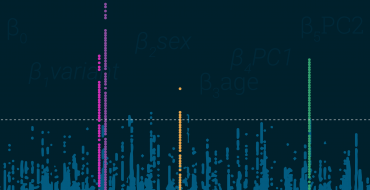How to Blog

The first thing to understand about blogging is Star Wars.
A good blog post should be an engaging piece of content. It will not only teach the reader something new about a given topic, but more importantly it will share with them the author’s unique perspective of that subject matter. And the first step in writing a good blog post is structuring it like a Star Wars movie.
You see, the original Star Wars films all employed the same three act frame work:
- Act One: The introduction – an inciting event with a dramatic escape
- Act Two: The middle – involved an infiltration of some kind, with the story gradually building around it
- Act Three: The resolution – big climatic battle, stuff blowing up, and the good guys winning
The reader comes to your blog wanting you to teach them something about a given topic. After giving them the basics, the hook to keep them reading should be an exciting new discovery (this represents the end of Act 1: The introduction). Next, they will want to be given more details on that topic, and a better understanding about what adventures were undertaken that led to the new discovery (this is naturally Act 2: The middle). And finally, the reader will be looking for you to share some of your insights on how this new finding will potentially change the nature of the topic and possibly the wider world. What are the implications of it all? (Act 3: The resolution)
So, when writing a blog post, always remember the Star Wars formula.
The second thing to know about blogging is that it should never be done to any kind of formula.
When it comes to blogging, you have to mix things up and make the subject matter as interesting as possible for the reader. And this applies to both the style and the content of the blog.
On the topic of style, you must avoid the “Wall of Text”. A blog is not a textbook, a press release, or a journal paper. Break the wording into easily consumed chunks, to help the reader take in the information faster, and also to emphasize your main points.
You should also avoid:
- too many details (focus on the most important information)
- long sentences (be clear and concise in what you write)
- complexity (just keep it simple)
With regards to content, the best blogs tell a story. And stories can be told in different ways. Many blogs use pictures, animations, or short videos to keep the reader engaged and to break up the flow of the text. They also make the material personable by sharing their particular viewpoint of the story.
For example, rather than simply spelling out what was done during a study (introduction, methods, results, etc), a blogger can explain to the reader what their personal role was in the experiments. They can also add in what their favourite parts were and why they were also fascinating. Don’t be afraid to write the post in the first person and share something with the reader about the experience.
Nothing draws a reader in like a personal touch.
And with story telling you can employ lots of tricks that writers use. For example, foreshadowing – this involves dropping hints early on in a post blog as to what is coming further along in the story. They also use transitions, which are signals that you are about to switch direction in the narrative (for example, this is the point where we are going to discuss examples). Good writers also use examples to help explain the subject matter and give the reader an alternative way of looking at a situation.
In addition to overall structure, an important aspect of writing a blog is making it interesting and engaging for the readers, and this way it will hopefully have more impact.
The third thing to realise about blogging is that there is a very human side to “impact”.
By this, I mean that people are going to consume whatever you have produced. And their reaction to it is going to depend on what kind of situation they have come from (they may be a butcher, a baker, a stressed-out-postdoc-code-maker). And it is going to depend on what kind of day they have had (a good day, a bad day, a stressed-out-postdoc-code-maker day). Most of these details, of course, will be unknown to you when you put your post into the public domain, but you have to be cognizant of them as you write your blog and consider carefully what you write.
When writing a blog, it is important to remember that the words we chose have very real impact.
A good example of this is that many individuals living with Parkinson’s do not like the word ‘patient’. While Parkinson’s is debilitating and impacts their quality of life, they do not feel like a patient sitting in a hospital. Nor do they like the word ‘disease’ or being referred to as ‘subjects’ in the context of a clinical study (they are participants). And words like ‘cure’ are extremely emotive.
So please be thoughtful about what and how you write.
And that is my Star Wars/No “Wall of Text”/stressed-out-postdoc-code-maker explanation blog post on how to blog.
Just a few simple ideas really: Structure, make it interesting, be considerate.
I hope it is of use.





